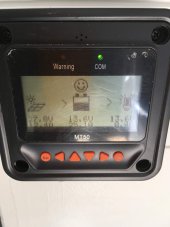I'd like to know what these people are comparing the electrodacus sytem to.
In my opinion, the SBMS0 (and other iterations) is in a class of its own. I'm not implying its better than everything else on the market, its not, but that it is really quite unique, full featured, and well thought through. The design model/logic, the feature set, and the capabilities are unparalleled at this price point. Its not a great fit for some people (most people) but its a great option for many in my opinion.
It may be frustrating to have someone say "ignore MPPT" after decades
I think a mistake both proponents and those who disagree with his system design philosophy often make is conflating his
products with broader system design philosophy or opinions (Dacian can be a little opinionated/dogmatic).
The SBMS0 can be used effectively, and has a great feature set, regardless of whether one agrees with all of Dacian's opinions. The SBMS0 works just fine with MPPT controllers desite Dacian's view on the matter, the SBMS0 is compatible with alternator charging via DC-DC charging despite Dacian's view on the matter, the SBMS0 is quite flexible in many ways, that is the beauty of it. Dacian has strong opinions about some things, but he designed the SBMS0 to be flexible (with a few exceptions (48V, temp disconnects)).
Point being I think people would do well to separate their opinion of the SBMS0 from some of Dacian's positions on things like MPPT which is a totally separate issue. I don't fully agree with everything Dacian says or thinks (or more accurately, I think he overgeneralizes/gets tunnel vision about his use-case and doesn't always understand the different design goals of other use-cases like marine and vehicle based systems), but I still think the SBMS0 is a great option, is really well thought out and feature rich, and one of the best
values on the market.




